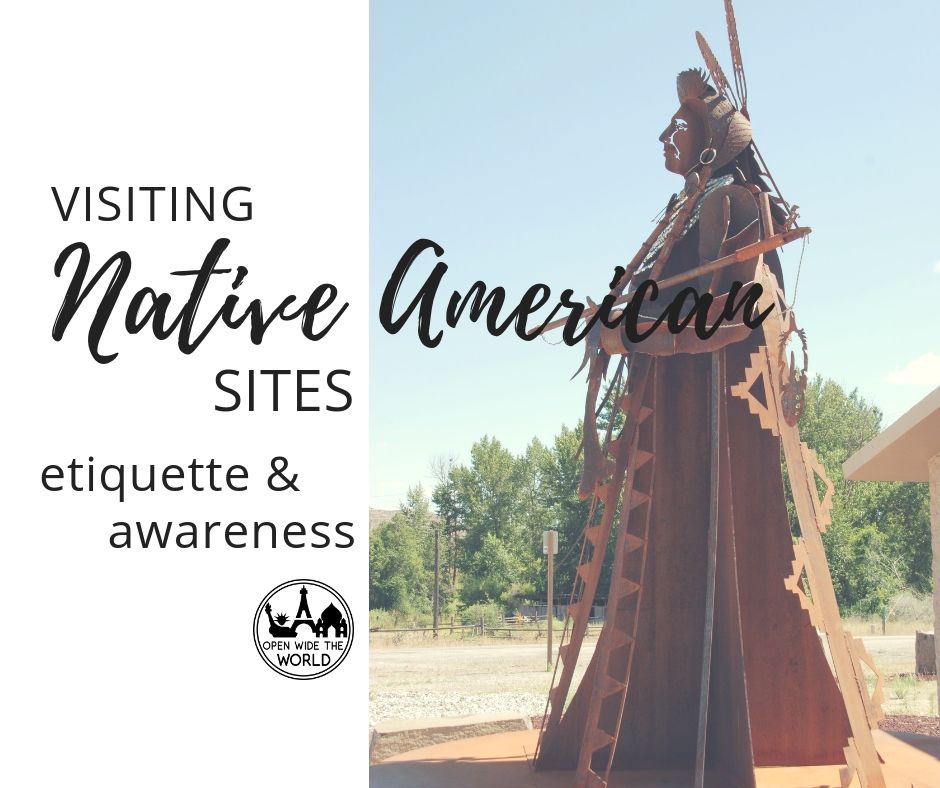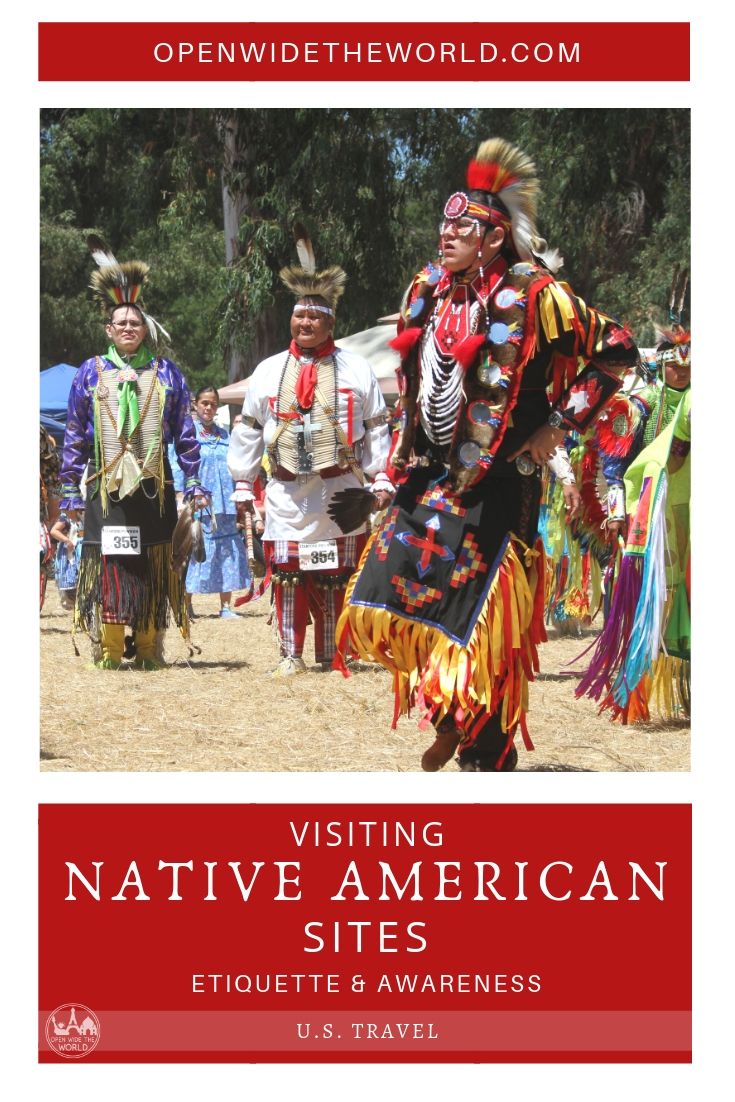Visiting Native American Sites ∙ Etiquette & Awareness
As the trend toward immersive and experiential travel continues, more and more travelers may find themselves interested in visiting Native American sites of various types. But some of us may be a little hesitant, wondering how to best honor and show respect to tribal peoples during a visit.
Several experts with ties to Native American tourism were kind enough to share their input on the topic. Here’s what they had to say:
current state of Native American tourism
Camille Ferguson, Executive Director, American Indian Alaska Native Tourism Association (AIANTA) shares statistics showing there were more than 1.95 million overseas visitors to Indian Country in 2016. By 2020, that number is projected to grow to 2.3 million visitors.
Those in the industry have noted positive trends during these tourism-growth years.
Betty Bouray, Site Administrator, Pawnee Indian Museum State Historic Site in Kansas, notes that from the perspective of the travel industry’s participation, Native American tourism has become “more respectful. When the Pawnee come in, if something is not to their liking, we are eager to work with them and change it or remove it.”
Bouray recalls that until the very recent past, some museums were still far more interested in their bottom line than in respecting those they claimed to represent, as seen in various burial pits where “someone was making money off the Pawnees’ dead.”
Bouray sees hope today, as her museum and others diligently focus on “educating, informing and keeping a way of life alive.”
Ferguson reminds us that in addition to allowing Native Americans “to tell their untold stories,” tourism to Native American sites also “can provide new economic opportunities for tribes.”
So how can we travelers respectfully take part in Native American tourism?
respectful etiquette for visiting Native American sites and Pow Wows
Remember, not all sites are the same.
Travis Zimmerman, Site Manager, Mille Lacs Indian Museum and Trading Post, points out that not all types of sites are the same. “Public museums and cultural centers are different from archeological sites, which may or may not be considered sacred by tribes.”
Zimmerman continues, “Visiting sacred sites needs to be done with more respect and knowledge about what is significant about the place and certain protocols that should be followed when visiting those sites” as compared to the lesser forethought that might be needed for a museum visit, for example.
Bryan Corbin, Public Relations Manager, Eiteljorg Museum of American Indians and Western Art in Indianapolis, further explains that “archaeological excavation sites might be under the jurisdiction of tribal governments or universities or the National Park Service or state park agencies. It is a good idea to check a location’s website in advance of visiting.” Corbin adds, “Even if a place is administered by a park service, visitors may be required to observe certain protocols in order to be respectful to Native cultures associated with the site, and to protect environmentally sensitive structures and objects from damage or looting.”
And not all tribes are the same.
Corbin suggests that travelers determine the tribes of the sites they will be visiting, then “contact the tribal governments individually since they are sovereign nations, and reach out directly to their cultural affairs officers.”
Corbin continues, “Each reservation community might have its own rules regarding the places and times when visitors would be welcome and whether photography would be permitted.”
While every tribe and region of Native America is different, Ferguson proposes these general guidelines for visiting any native lands:
Be attentive to signage.
Respect the privacy of residential communities.
Ask permission before photographing or recording an individual, an event or activity.
Do not pick up or remove artifacts or objects.
Burial grounds and religious ceremonies are sacred and are not to be entered.
But the law is always the same.
The Native American Graves Protection and Repatriation Act (NAGPRA) offers federal protection of Native American remains and artifacts, as well as offering stiff penalties for violations. Visitors should never pick up or remove Native American cultural items, but “protect this precious cultural heritage for future generations,” Corbin exhorts.
Remember, Native American sites are modern, as well as historic.
Ferguson explains, “Most people don’t understand the long history of Native Americans; they don’t understand that Native American cultures are not just entries in the history books, but rather the cultures are very much alive and active in the present day. Native Americans are not a bygone people.”
“Native Americans are contemporary people who live in all 50 states, in big cities and in rural areas,” adds Corbin.
Ferguson continues, Native American “tourism can preserve the traditions that are still thriving today and reduce the misperception that Native American culture only exists in history books.”
Because travelers are visiting the modern lives of Native Americans, not just their ancient history, Corbin reminds visitors that “reservation communities are people’s family homes; residents’ privacy and dignity must be protected.”
Present-day Native Americans continue to connect with their traditional sacred sites, often leaving devotions or offerings. Bouray shares, “We have had several Pawnee visit. Every time they visit, I am amazed and they are in awe of the place and so thankful for taking care of their heritage. After they leave, we may find trinkets of things on the grounds such as tobacco or sage, sometimes pennies over door ledges.”
And don’t forget to slow down.
Bouray urges visitors to “take time to learn and take it all in. So many come in and zoom through. But when you come to a site like ours, it takes time to take it all in. The Pawnee as well as all the Plains Indians are very interesting people and we have so much to learn about them.”
Bouray adds that when visitors slow down and take it all in, “Many visitors say they can feel the spirits at this site.”
Have you visited a Native American site: a museum, reservation, archaeological site, or pow wow?
Do you have a site to recommend? We’d love to hear about your experience. Tell us about it in the comments!
Pin this post!
Note: The cover image for this post was taken at the Chief Joseph Rest Area on the Colville Reservation, State Route 155, Nespelem, Washington. The Colville Confederated Tribes and the Town of Nespelem coordinated efforts to construct the rest area in 2010.



